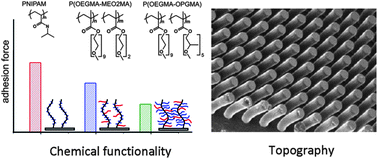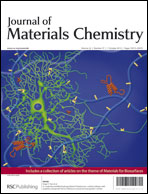Switchable adhesion by chemical functionality and topography
Abstract
Progress in adhesion technology over the last few decades has led to widespread replacement of mechanical fasteners with adhesive bonds. Despite the advances, it remains challenging to produce materials that are sticky on demand. In this feature article we highlight recent efforts to develop reversibly switchable adhesives, that exhibit the ability to trigger adhesion in response to an environmental change – for example, pH,

- This article is part of the themed collection: Materials for biosurfaces

 Please wait while we load your content...
Please wait while we load your content...